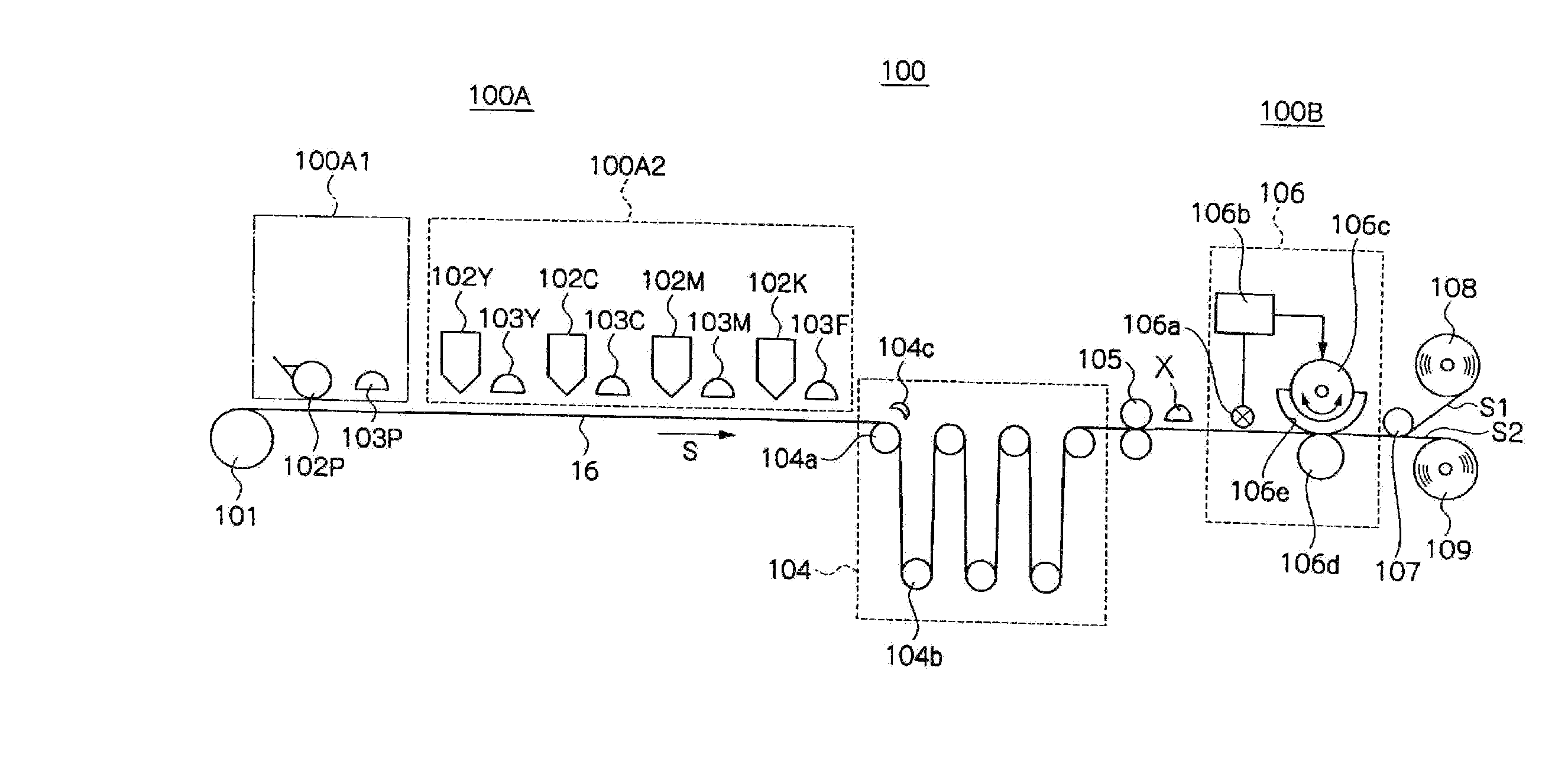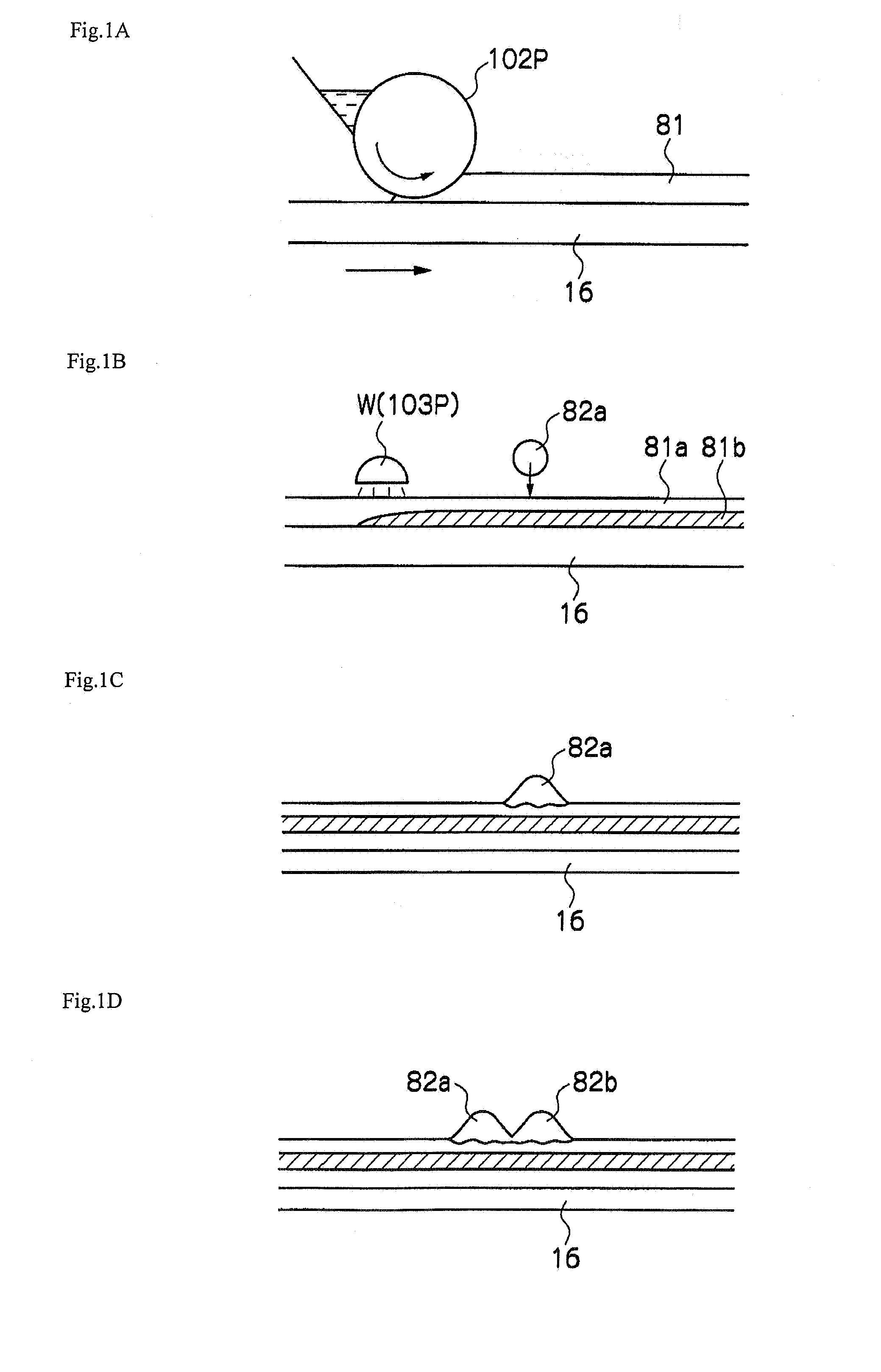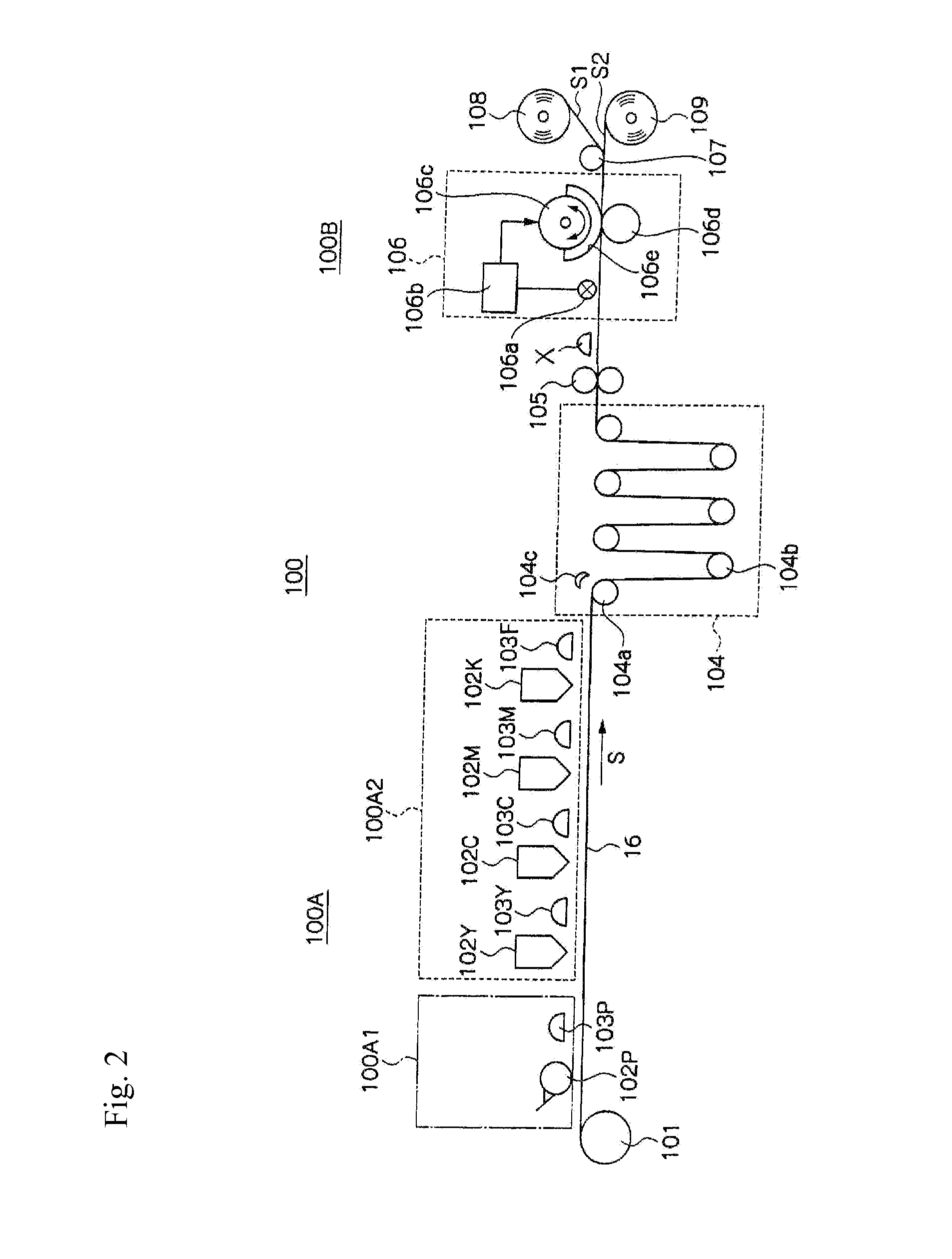Ink jet recording method and ink jet recording device
a recording method and ink jet technology, applied in the field of ink jet recording method and ink jet recording device, can solve the problems of uneven line width, different images formed, and practicable use, and achieve the effects of preventing the spread of ink dots, improving image sharpness, and increasing the density of surfactan
- Summary
- Abstract
- Description
- Claims
- Application Information
AI Technical Summary
Benefits of technology
Problems solved by technology
Method used
Image
Examples
example 1
Preparation of Yellow Pigment Dispersion
[0320] Cromophtal Yellow LA (a pigment manufactured by Ciba Specialty Chemicals K.K.) 16g, dipropylene glycol diacrylate (DPGDA, manufactured by Akcros Chemicals Ltd.) 48g, and DISPERBYK-168 (manufactured by BYK-Chemie Japan K.K.) 16g were mixed and stirred for 1 hour with a Silverson high-speed stirrer. The mixture after stirring was dispersed with Disper Matte Mill and a pigment dispersion P-1 was obtained.
[0321] The dispersion conditions are that the mill was filled with zirconia beads having a diameter of from 0.4 to 0.5 mm at a filling rate of 80%, the peripheral velocity was 9 m / s, and the dispersion time was 6 hours.
[0322] PB15:3 (trade name: IRGALITE BLUE GLO, manufactured by Ciba Specialty Chemicals K.K.) 16 g, dipropylene glycol diacrylate (DPGDA, manufactured by Akcros Chemicals Ltd.) 48 g, and DISPERBYK-168 (manufactured by BYK-Chemie Japan K.K.) 16 g were mixed, and a pigment dispersion P-2 was obtained according to the same me...
example 2
[0387] The liquids I-1 to I-4 and the undercoating liquid was prepared in the same manner as in Example 1, and the image recording and the evaluation of the character quality of the reversal characters were performed, except that the liquids I-1 to I-4 and DPGDA (manufactured by Akcros Chemicals Ltd.) used for the preparation of the undercoating liquid used in Example 1 were changed to the same mass of an organic high boiling point solvent S-15 as shown below. The same results as that in Example 1 were also obtained in Example 2.
example 3
[0388] The image recording and the evaluation of the character quality of the reversal characters were performed using the same ink and undercoating liquid and in the same manner as Example 1, except the light source 103P for half-curing of the undercoating liquid was removed and the undercoating liquid and the yellow ink provided on the recording medium were half-cured at the same time by the pinning light source provided downstream of the yellow ink head with low visibility. The same results as that in Example 1 were also obtained in Example 3. By removing the light source 103P for half-curing of the undercoating liquid, bleeding was caused in the yellow ink. However, it does not lead to the deterioration in the image quality because of the low visibility of the yellow ink, and the cost for the light source could be reduced.
PUM
| Property | Measurement | Unit |
|---|---|---|
| surface temperature | aaaaa | aaaaa |
| thickness | aaaaa | aaaaa |
| density | aaaaa | aaaaa |
Abstract
Description
Claims
Application Information
 Login to View More
Login to View More - R&D
- Intellectual Property
- Life Sciences
- Materials
- Tech Scout
- Unparalleled Data Quality
- Higher Quality Content
- 60% Fewer Hallucinations
Browse by: Latest US Patents, China's latest patents, Technical Efficacy Thesaurus, Application Domain, Technology Topic, Popular Technical Reports.
© 2025 PatSnap. All rights reserved.Legal|Privacy policy|Modern Slavery Act Transparency Statement|Sitemap|About US| Contact US: help@patsnap.com



